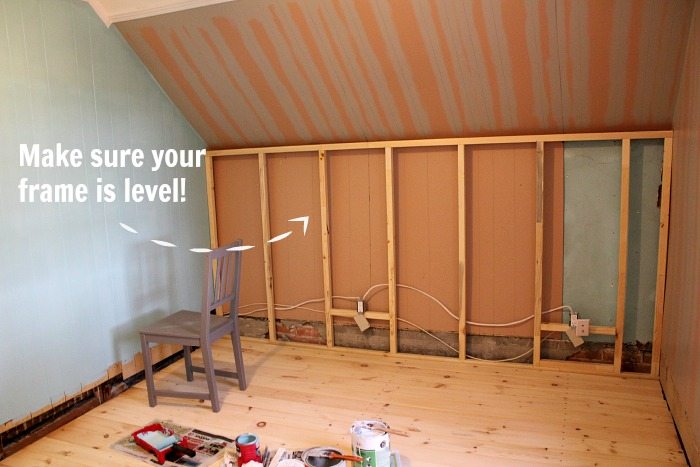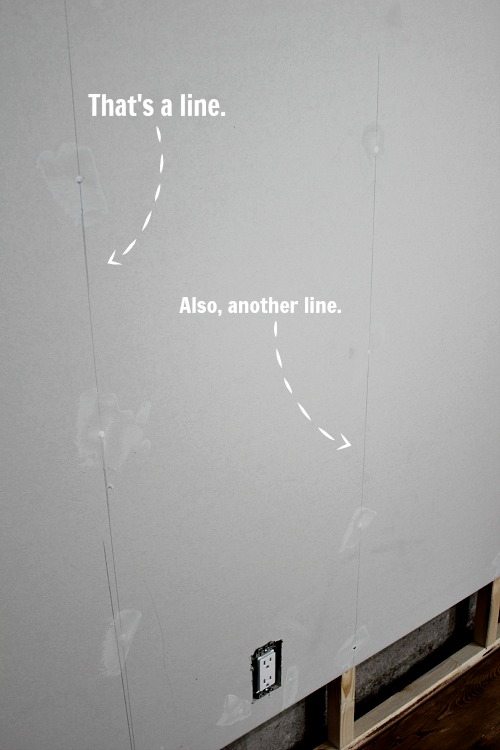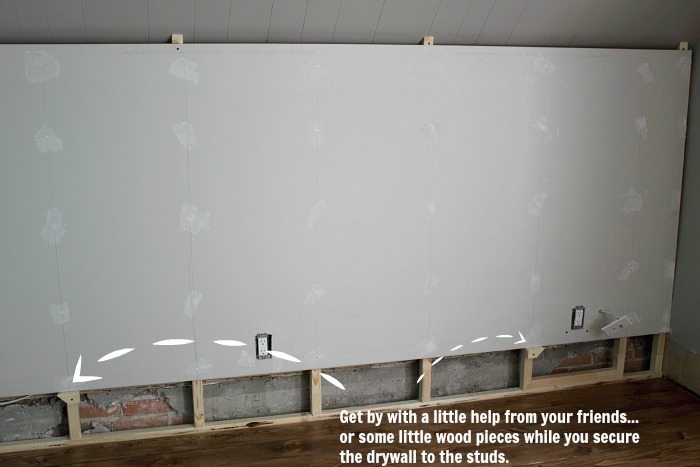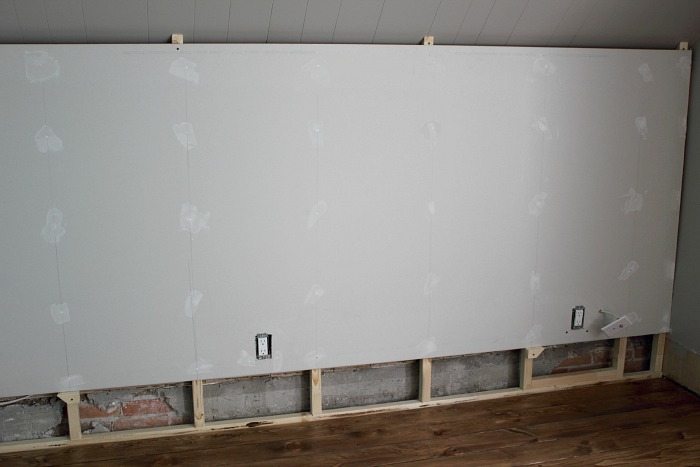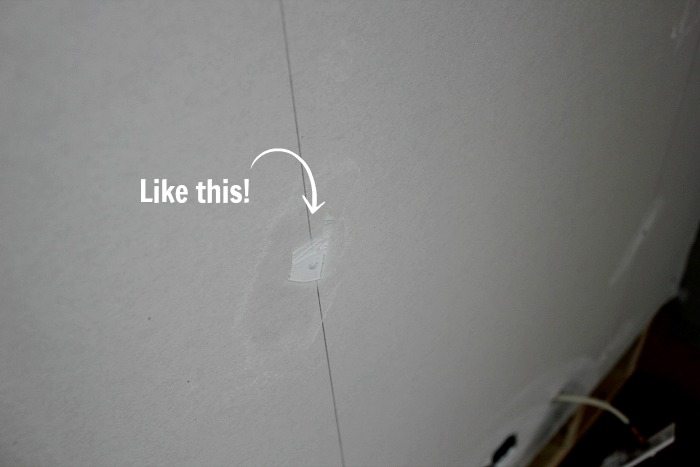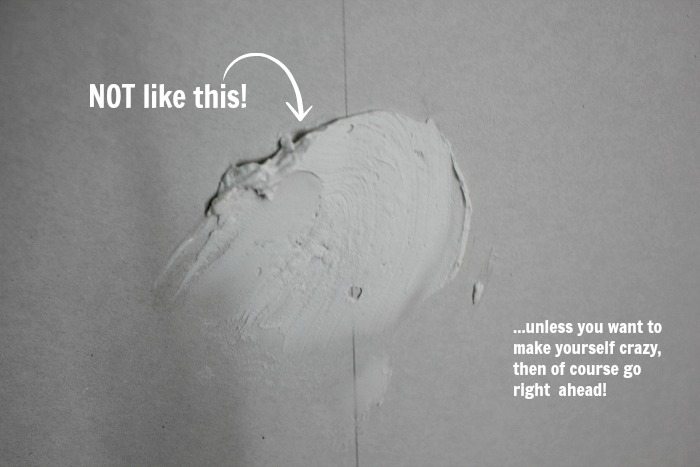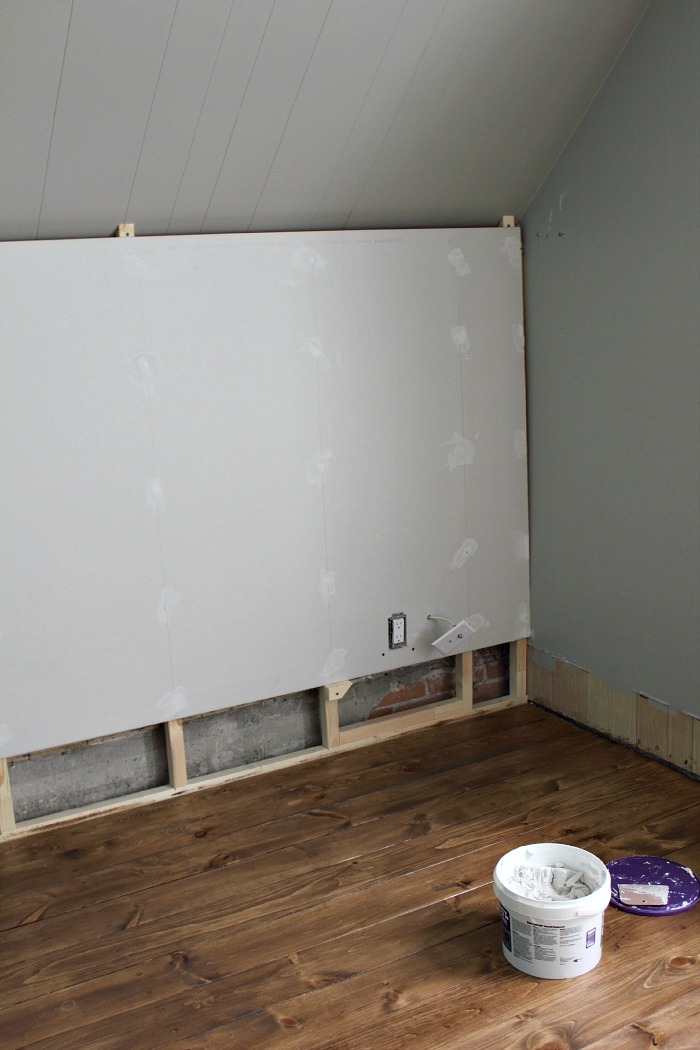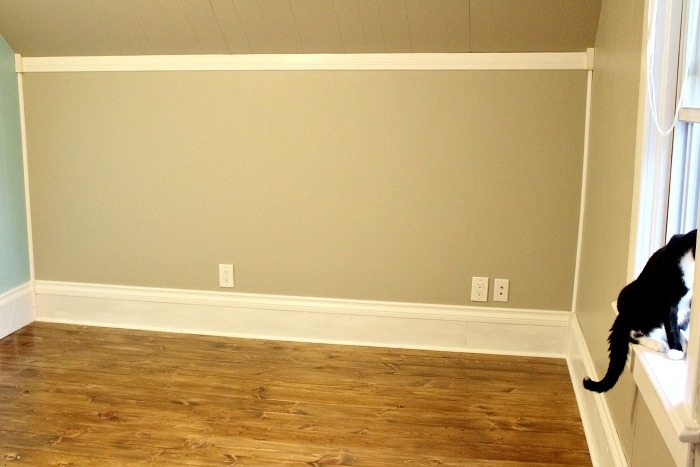The number of walls that we have in this house that aren’t covered in paneling is seriously itty bitty. We’ve mostly just been painting for now and coming up with results that we’re pretty happy with, and sometimes we’re even ecstatic about how good painted paneling really looks. We also have a lot of really wonky walls though, so sometimes the only thing to do is to cover them up, or tear them down, or maybe a little of both.
Last week we did a whole bunch of work in Kennedy’s room: Paint, new lighting, new flooring, new trim, all that good stuff. If you follow me on Facebook or Instagram, you may have been following along with that progress. We still need to add a few finishing touches before the “big reveal”, but it’s looking good. We had one of those wonky walls in there so rather than fussing with it too much, we just went ahead and drywalled it!
Drywalling always seems to be one of those things that people talk about in hushed tones when they talk about home improvement. If it’s in bad shape, they hope people won’t notice, but are secretly driven crazy by it because they think fixing it up is either going to a huuuge job or something that you really have to call a professional in for. If you have a wall that needs to be fixed up, just pull it down and throw a fresh sheet of drywall up there. Really! You’ll be so happy with how fresh everything looks afterwards.
Just follow our easy tips and you’ll be good to go!
First you’ll need to frame out your wall, if a frame isn’t already there for you. This is your chance to make your wall look really nice and straight if your house is a mess of angles like ours is, so use your level! Build yourself a simple little structure like this and just anchor it with some screws. It’s maybe the simplest thing you can possibly build, besides DIY Shutters, that is. 🙂
So now it’s time to attach the drywall. Try to use a single sheet, or as few sheets as you can. This will make your life so much easier and you won’t need to fill and tape as many joints!
Measure how fair apart your studs are in the frame that you built and draw some faint lines in those places on your sheet of drywall. This will make your life extra easy when it comes time to knowing exactly where to put the screws.
Like this!
Drywall can be super heavy in big sheets, especially if you’re trying to bring it up a really narrow stairwell without breaking any light fixtures in the process (#AskMeHowIKnow), but try to keep it in a big sheet if you can because it will be so worth it!
To help you keep the drywall in place while you’re screwing it into the frame, you can do like Chris did and make yourself some little holder shelf pieces. So smart, right?
Just make sure those pieces are level too!
Now all you need to do is attach your drywall by screwing it into place along the lines you drew!
And look! You have a wall!
Now to fill in all your joints and screw holes.
It looks and sounds boring and tedious, but I promise you it can be so simple! Grab your drywall mud and your scraper/spatula thing and I’ll show you!
If you need to tape joints or corners, do those first. Apply a bit of mud under the tape and then again over top.
Now for the screw holes. And, here’s the trick with mudding: You want to apply very little of it. Just enough to cover the screw and barely any extra at all.
Don’t let them *ahemchris* tell you that you need to glob it on. You don’t. You’re just going to spend all eternity sanding it off later and then you’re never going to want to do it again.
You’re going to have to do two coats of mud over your joints and screws anyway, so why not make them quick coats? And yes, you do have to do two coats. Everything settles and you’ll end up with little dips where the screws are if you try to get away with one coat, whether it’s thick or thin. Trust me, I have the dimply walls to prove it. 🙂
So now you’ve built a simple frame, attached a sheet of drywall, and filled in all the holes. Just a few simple steps and you’ve made a whole wall!
All that’s left to do now is sand the small amount of excess mud (once it’s dry!) and you’re ready to paint and prime.
If you’ll be sanding by hand, you’ll be REALLY happy that you took my advice because your life will be so much easier with just this little bit of sanding to do. If you’re using an electric sander, make sure you’re super gentle with your sanding. I find it helps to use a really fine grit sand-paper that’s even a bit worn out to make sure I don’t overdo it.
So that’s it! I’m always so impressed and excited by what a big difference a bit of fresh drywall can make in a room. If your walls are looking a little wonky or rough, why not just replace them now that you know how easy it really is!
Here’s a peek at the room with the paint done, floors finished and all the trim in, but that’s it!
Hope to be able to show the completely finished room really soon!
// ]]>
Courtenay Hartford is the author of creeklinehouse.com, a blog based on her adventures renovating a 120-year-old farmhouse in rural Ontario, Canada. On her blog, Courtenay shares interior design tips based on her own farmhouse and her work as founder and stylist of the interior photography firm Art & Spaces. She also writes about her farmhouse garden, plant-based recipes, family travel, and homekeeping best practices. Courtenay is the author of the book The Cleaning Ninja and has been featured in numerous magazines including Country Sampler Farmhouse Style, Better Homes and Gardens, Parents Magazine, Real Simple, and Our Homes.

